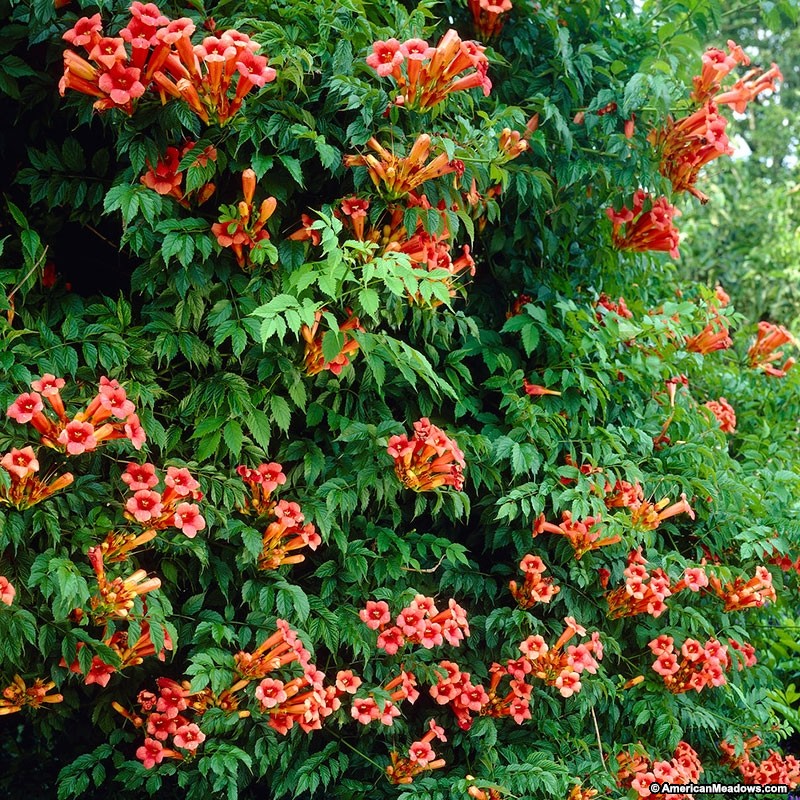Trumpet Vine (Campsis radicans)
Arabic name: بجنونيا
The Trumpet Vine (Campsis radicans) is a tough drought-tolerant deciduous vine that is native to the southeastern United States. It is a popular garden plant in temperate regions. This vigorous vine produces clusters of brightly-colored, reddish-orange, trumpet-shaped flowers that bloom from June to August.
The Trumpet Vine grows to a height of 10m, with a spread of 2m. It has a fast growth rate, taking six months to one year to reach its mature size.
Requirements: Grows in full sun, and is frost hardy. Prefers rich soil, but can tolerate poor soils. Requires good drainage.
Water usage: Requires little watering (twice a month).
Appearance: The Trumpet Vine is a deciduous woody vine. Its bright green compound leaves are divided into 9 – 11 toothed leaflets, each of which is 6cm long. The 7 –10cm long tubular flowers grow in clusters of 6 – 12. Seeds are produced in a 10 – 20cm long slender capsule.
Notes on use: A vine or shrub grown for its striking orange flowers. Its roots enable it to attach itself unassisted to trellises, walls, and trees. However, care should be taken when planting the Trumpet Vine next to structures since its strong aerial roots may damage surfaces.
Propagation: Propagates easily by seed or root suckers.
Maintenance: The Trumpet Vine is characterized by aggressive growth, and produces numerous suckers. To keep it within bounds, trim regularly. Old specimens should be thinned to prevent them from becoming top heavy and disengaging from supporting surfaces.
Notes: The Trumpet Vine is attractive to hummingbirds. Contact with leaves and flowers may cause mild skin irritation. In favorable conditions, the Trumpet Vine can be invasive.
Image source: www.tennesseenaturescapes.com
Image source: www.americanmeadows.com
This article is part of a series of articles prepared by the Center for the Study of the Built Environment (CSBE) on water conserving landscapes.
For additional information on water conserving gardens, visit the CSBE web site at www.csbe.org
Support for the CSBE project on water conserving landscapes is provided by WEPIA (Water Efficiency and Public Information for Action), a program being implemented in collaboration with the Ministry of Water and Irrigation and funded by the United States Agency for International Development (USAID).


